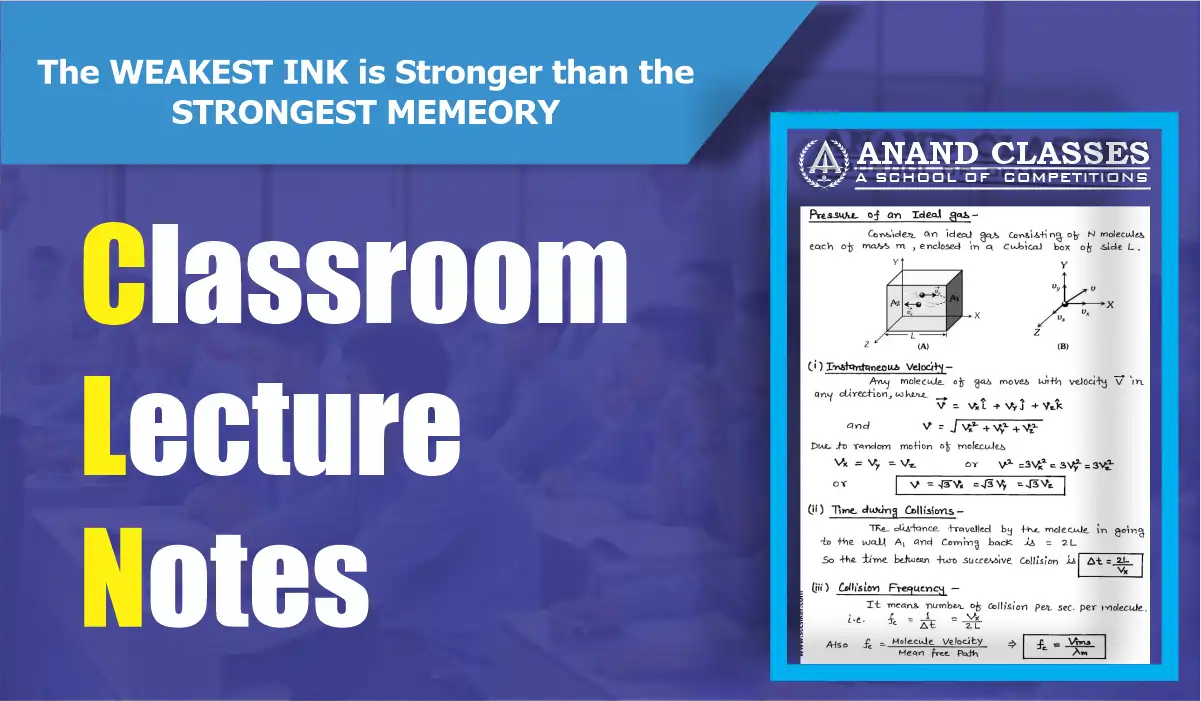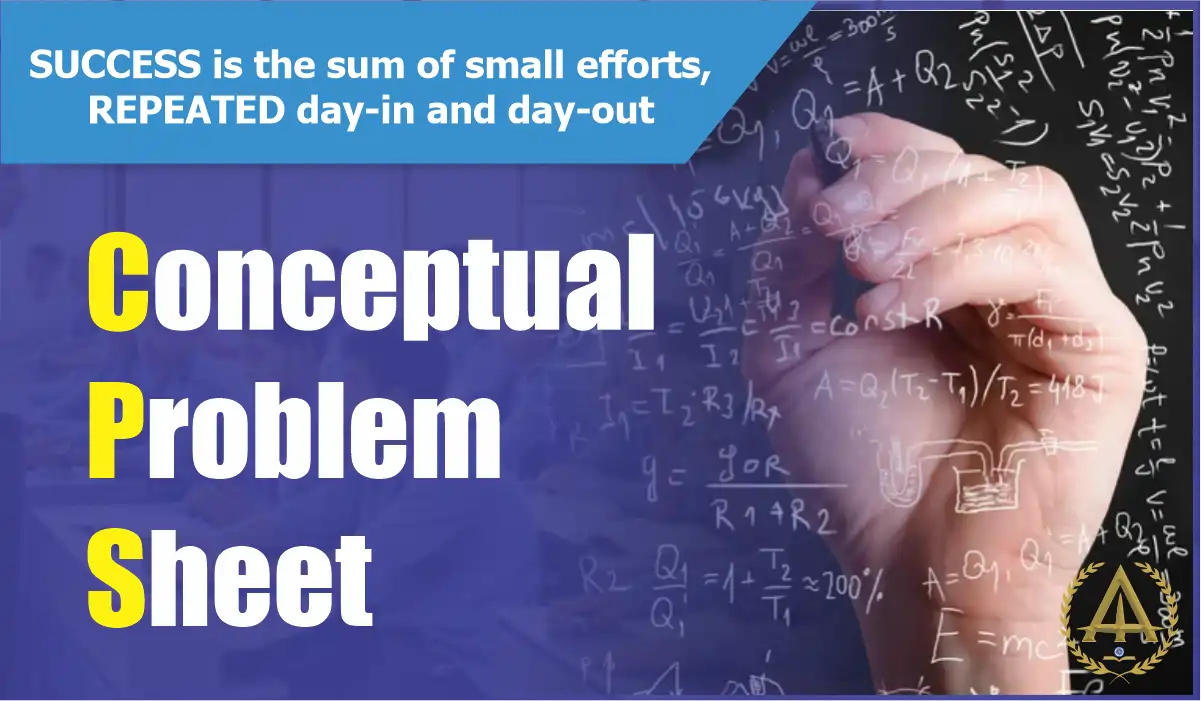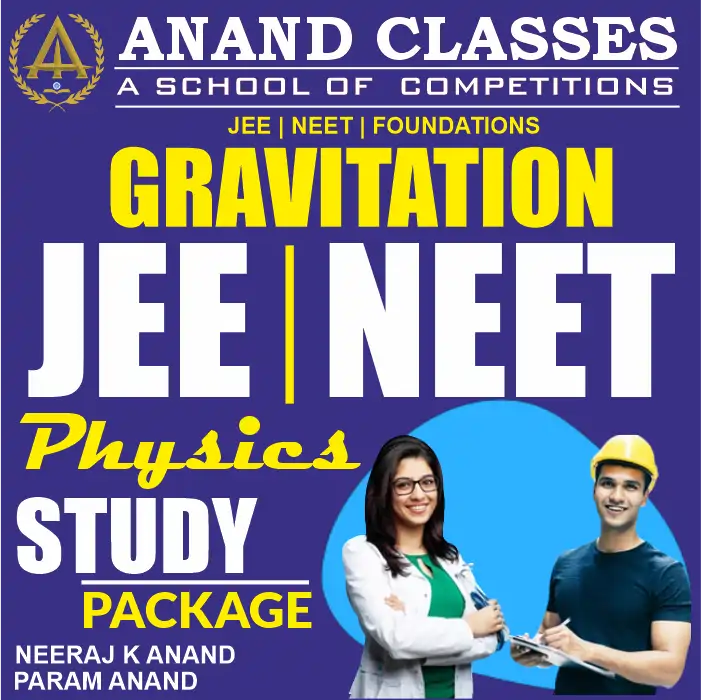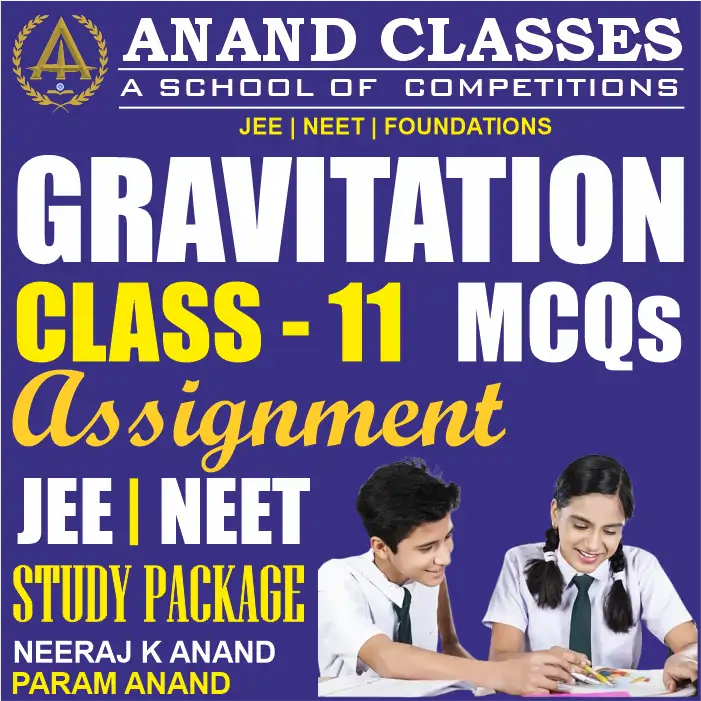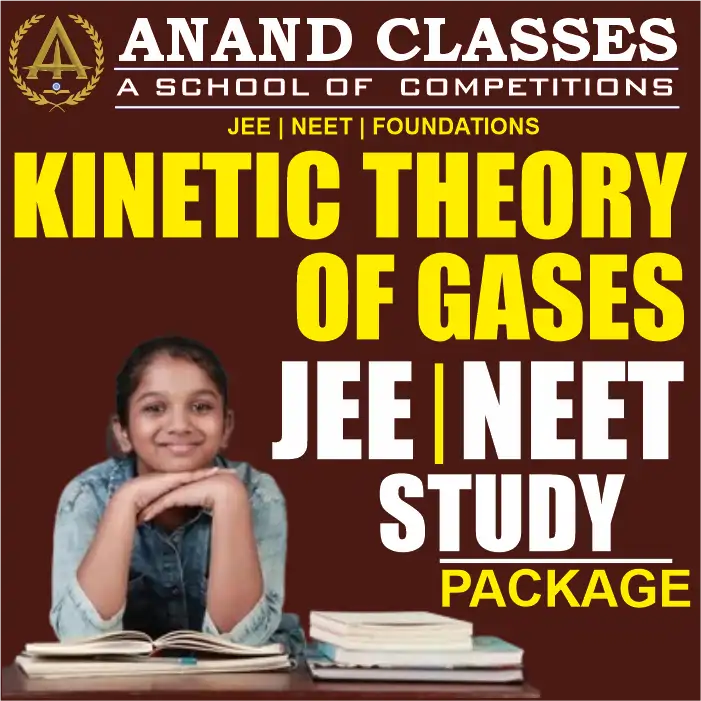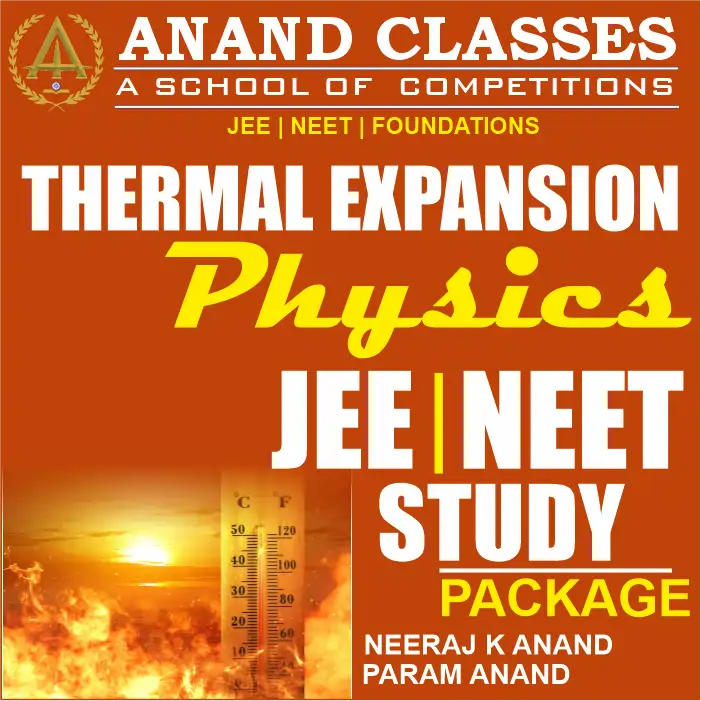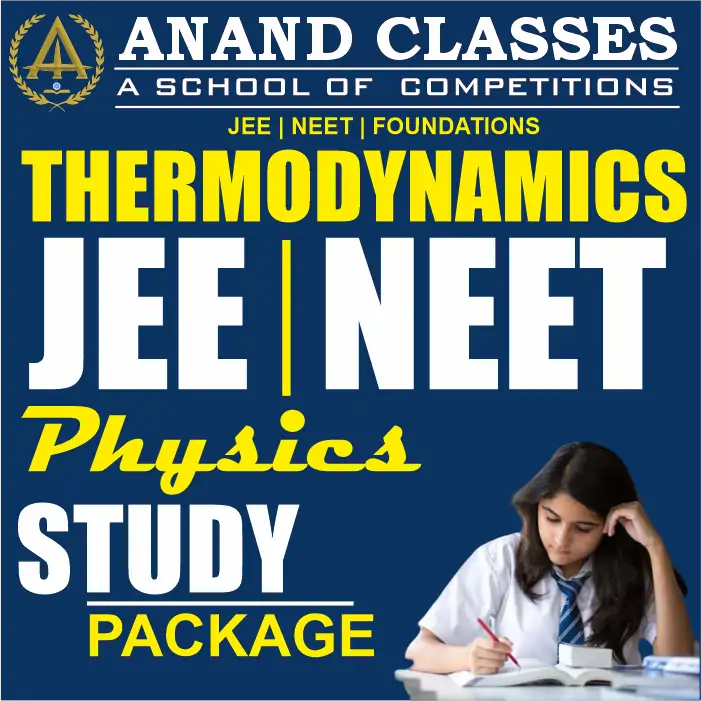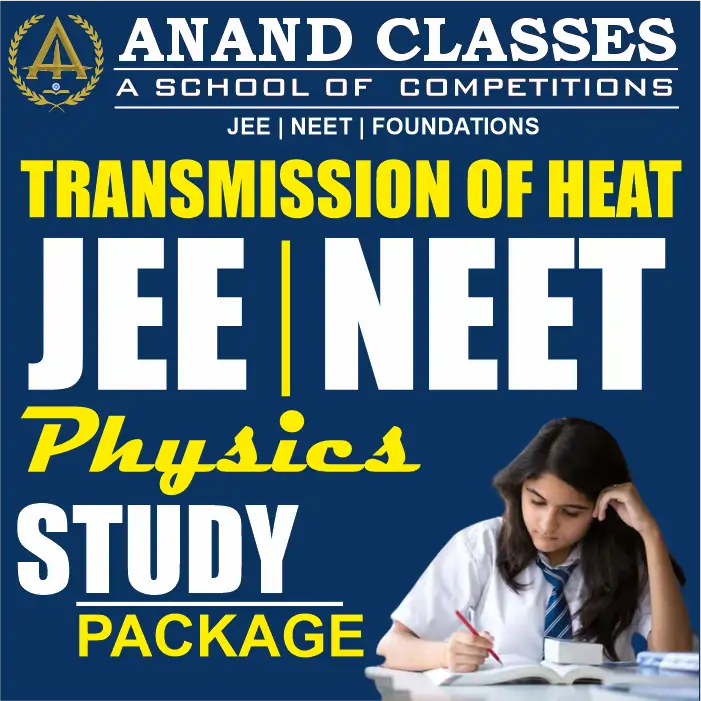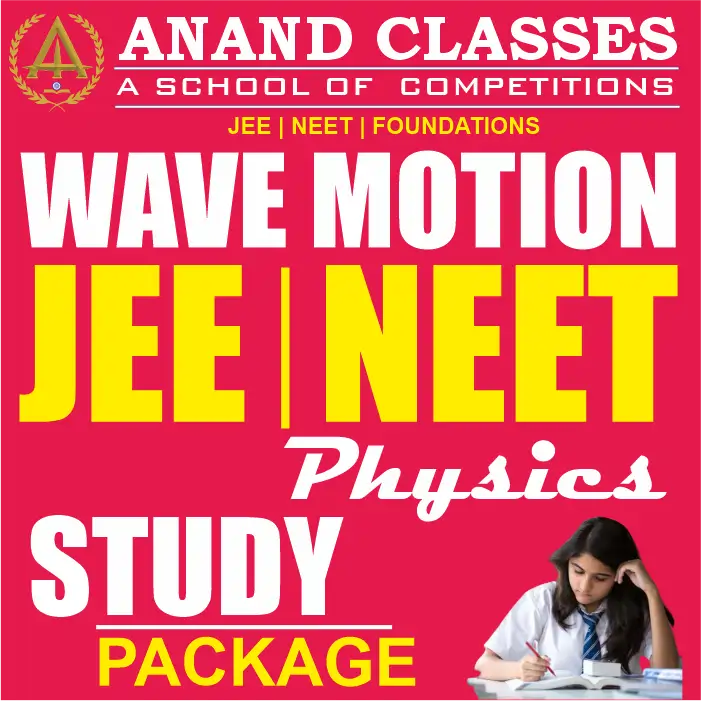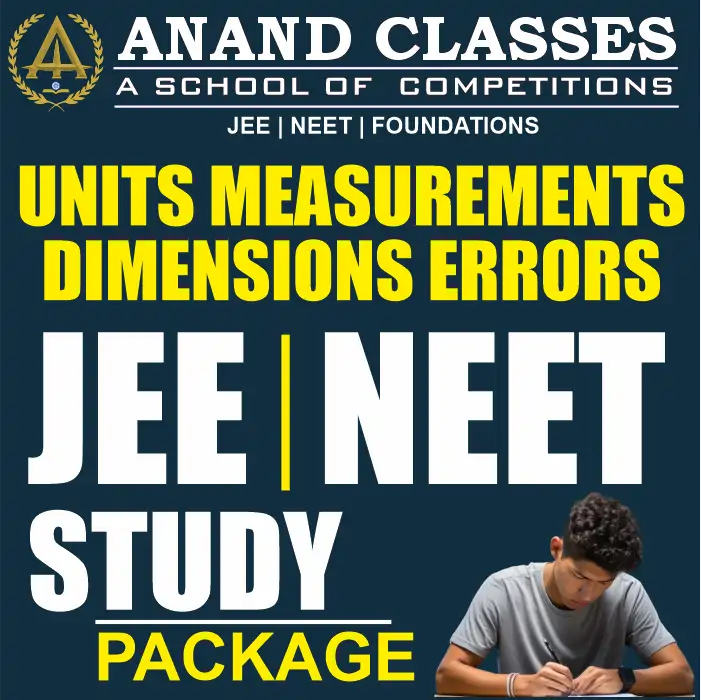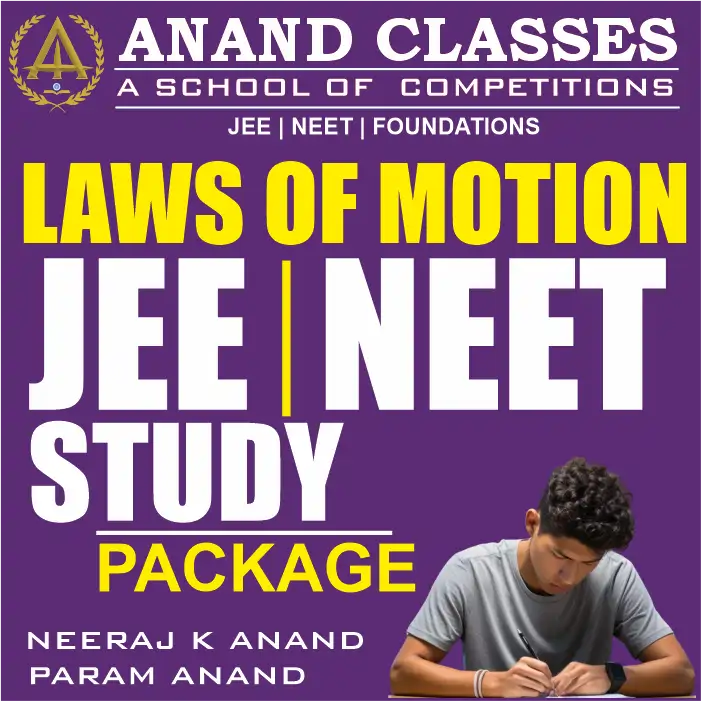Work Energy Power Collisions Notes With JEE NEET MCQS Physics Class 11 CBSE Study Material Full Chapter Download pdf-Anand Classes
What is Work?
Work is the measurement of energy transfer that takes place when an object is displaced by an external force applied in the direction of the displacement.
What is Power?
The rate of doing work is called power.
What is Energy?
The capacity for doing work is called Energy. It may exist in kinetic, potential, thermal, chemical, electrical, nuclear, or various other forms. The SI unit of energy is the same as that of work.
What is the Principle of Conservation of Energy?
The Principle related to the conservation of mechanical energy states that the total mechanical energy of a substance remains in equilibrium if the only forces acting upon the body are conservative in nature.
Law of Conservation of Energy
Energy can neither be created nor destroyed; however, it can be changed from one to another form. The total energy in an isolated system remains the same, or energy is conserved over time. The mass remains the same in any closed system within boundaries except for the heat form, which can cross boundaries.
As per the law, energy cannot be created, and neither can it be destructed, but conveniently, can it be changed to different forms. Chemical energy can be converted into heat energy which could further be used to generate potential energy in a different body. As energy is changed from one to another form, net gain/loss remains the same. Therefore, energy is said to be conserved, wherein the total amount remains the same.
Major Topics Covered in the chapter work energy and power class 11 notes pdf are mentioned below:
- Work Energy and Power Class 11 notes pdf
- Energy
- Work
- Types of Energy
- Heat Energy and Internal Energy
- Different Forms Of Energy
- Power
- Conventional and Non-conventional Energy Sources
- Kinetic Energy
- Electric Power
- Potential energy
What is Work?
For work to be done, a force must be exerted and there must be motion or displacement in the direction of the force. The work done by a force acting on an object is equal to the magnitude of the force multiplied by the distance moved in the direction of the force. Work has only magnitude and no direction. Hence, work is a scalar quantity.
Formula of Work
The work done by a force is defined to be the product of the component of the force in the direction of the displacement and the magnitude of this displacement.
Where W is the work done, F is the force, d is the displacement, θ is the angle between force and displacement and F cosθ is the component of force in the direction of displacement.
We understand from the work equation that if there is no displacement, there is no work done, irrespective of how large the force is. To summarize, we can say that no work is done if:
- the displacement is zero
- the force is zero
- the force and displacement are mutually perpendicular to each other.
Unit of Work
The SI unit of work is Joule (J). For example, if a force of 5 newtons is applied to an object and moves 2 meters, the work done will be 10 newton-meter or 10 Joule. It should be noted that 1 J = 1 N ⋅ m = 1 kg ⋅ m2/s2.
Example of Work
An object is horizontally dragged across the surface by a 100 N force acting parallel to the surface. Find out the amount of work done by the force in moving the object through a distance of 8 m.
Solution:
Given:
F = 100 N, d = 8 m
Since F and d are in the same direction, θ = 0, [θ is the angle of the force to the direction of movement], therefore
W = FdCos θ
W = 100 x 8 x Cos 0
W = 800 J [Since Cos 0 = 1]
What is Energy?
Energy is the ability to perform work. Energy can neither be created nor destroyed, and it can only be transformed from one form to another. The unit of Energy is the same as of Work, i.e. Joules. Energy is found in many things, and thus there are different types of energy.
All forms of energy are either kinetic or potential. The energy in motion is known as Kinetic Energy, whereas Potential Energy is the energy stored in an object and is measured by the amount of work done.
Types of Energy
Some other types of energy are given below:
- Mechanical energy
- Mechanical wave energy
- Chemical energy
- Electric energy
- Magnetic energy
- Radiant energy
- Nuclear energy
- Ionization energy
- Elastic energy
- Gravitational energy
- Thermal energy
- Heat Energy
Unit of Energy
The SI unit of energy is Joules (J), named in honour of James Prescott Joule.
What is Power?
Power is a physical concept with several different meanings, depending on the context and the available information. We can define power as the rate of doing work, and it is the amount of energy consumed per unit of time.
Formula of Power
As discussed, power is the rate of doing work. Therefore, it can be calculated by dividing work done by time. The formula for power is given below.
P = W/t
Where, P is the power, W is the work done and t is the time taken.
Unit of Power
As power doesn’t have any direction, it is a scalar quantity. The SI unit of power is Joules per Second (J/s), which is termed as Watt. Watt can be defined as the power needed to do one joule of work in one second. The unit Watt is dedicated in honour of Sir James Watt, the developer of the steam engine.
Example of Power
A garage hoist lifts a truck up 2 meters above the ground in 15 seconds. Find the power delivered to the truck. [Given: 1000 kg as the mass of the truck]
First we need to calculate the work done, which requires the force necessary to lift the truck against gravity:
F = mg = 1000 x 9.81 = 9810 N.
W = Fd = 9810N x 2m = 19620 Nm = 19620 J.
The power is P = W/t = 19620J / 15s = 1308 J/s = 1308 W.
Introduction
A collision occurs when two objects come in direct contact. It is the event in which two or more bodies exert forces on each other in about a relatively short time. There are two types of collisions, namely:
Elastic Collision
An elastic collision is one where there is no net loss in kinetic energy in the system due to the collision.
Inelastic Collision
An inelastic collision is a type of collision where this is a loss of kinetic energy. The lost kinetic energy is transformed into thermal energy, sound energy, and material deformation.
What Is an Elastic Collision?
When two bodies collide but there is no loss in the overall kinetic energy, it is called a perfectly elastic collision.
Elastic Collision Definition:
An elastic collision is a collision in which there is no net loss in kinetic energy in the system due to the collision. Both momentum and kinetic energy are conserved in an elastic collision.
Basically in the case of elastic collision, the kinetic energy before and after the collision remains the same and is not converted to any other form of energy.
It can be either one-dimensional or two-dimensional. In the real world, perfectly elastic collision is impossible because there is bound to be some energy conversion, however small.
However, though there is no change in the linear momentum of the whole system, there is a change in the individual momenta of the involved components, which are equal and opposite in magnitude and cancel each other out and the initial energy is conserved.
Elastic Collision Examples
- When a ball at a billiard table hits another ball, it is an example of elastic collision.
- When you throw a ball on the ground and it bounces back to your hand, there is no net change in the kinetic energy, and hence, it is an elastic collision.
Elastic Collision Formula
The Elastic Collision formula of momentum is given by:
m1u1 + m2u2 = m1v1 + m2v2
Where,
- m1 = Mass of 1st body
- m2 = Mass of 2nd body
- u1 =Initial velocity of 1st body
- u2 = Initial velocity of the second body
- v1 = Final velocity of the first body
- v2 = Final velocity of the second body
The Elastic Collision formula of kinetic energy is given by:
(1/2) m1u12 + (1/2) m2u22 = (1/2) m1v12 + (1/2) m2v22
Elastic Collision Example Problem
Two billiard balls collide. Ball 1 moves with a velocity of 6 m/s, and ball 2 is at rest. After the collision, ball 1 comes to a complete stop. What is the velocity of ball 2 after the collision? Is this collision elastic or inelastic? The mass of each ball is 0.20 kg.
Solution:
To find the velocity of ball 2, use a momentum table.
| Objects | Momentum Before | Momentum After |
| Ball 1 | 0.20 kg × 6 m/s = 1.2 | 0 |
| Ball 2 | 0 | 0.20 kg × v2 |
| Total | 1.2 kg × m/s | 0.20 kg × v2 |
1.2 kg × m/s = 0.20 kg × v2
v2 =1.2 / 0.20 = 6 m/s
To determine whether the collision is elastic or inelastic, calculate the total kinetic energy of the system both before and after the collision.
| Objects | KE Before (J) | KE After (J) |
| Ball 1 | 0.50 × 0.20 × 62 = 3.6 | 0 |
| Ball 2 | 0 | 0.50 × 0.20 × 62 = 3.6 |
| Total | 3.6 | 3.6 |
Since the kinetic energy before the collision equals the kinetic energy after the collision (kinetic energy is conserved), this is an elastic collision.
Difference between Elastic and Inelastic
Elastic Collision | Inelastic Collision |
| The total kinetic energy is conserved. | The total kinetic energy of the bodies at the beginning and the end of the collision is different. |
| Momentum is conserved. | Momentum is conserved. |
| No conversion of energy takes place. | Kinetic energy is changed into other energy such as sound or heat energy. |
| Highly unlikely in the real world as there is almost always a change in energy. | This is the normal form of collision in the real world. |
| An example of this can be swinging balls or a spacecraft flying near a planet but not getting affected by its gravity in the end. | An example of an inelastic collision can be the collision of two cars. |
Applications of Elastic Collision
- The collision time affects the amount of force an object experiences during a collision. The greater the collision time, the smaller the force acting upon the object. Thus, to maximize the force experienced by an object during a collision, the collision time must be decreased.
- Likewise, the collision time must be increased to minimise the force. There are several real-world applications of these phenomena. The airbags in automobiles increase the collapse time and minimize the effect of force on objects during a collision. Airbag accomplishes this by extending the time required to stop the momentum of the passenger and the driver.
Frequently Asked Questions on CBSE Class 11 Physics Notes Work, Energy and Power
What is the law of conservation of energy?
The law of conservation of energy states that the amount of energy is neither created nor destroyed.
What is work?
The measure of energy transfer that occurs when an object is moved over a distance by an external force is known as work.
What is the definition of power?
Power can be defined as the rate of doing work.
How are work, energy and power related to each other?
Work is the energy needed to apply a force to move an object a particular distance. Power is the rate at which that work is done.
What is the unit of work?
The unit of work is Joule.
What is the unit of energy?
The unit of energy is Joule.
What is the unit of power?
The unit of power is Watt.
Is power a scalar quantity?
Power is a scalar quantity because it is a ratio of two scalar quantities.
What is Elastic Collision?
Does Elastic Collision conserve momentum?
What is an example of an elastic collision?
What is the difference between elastic and inelastic collision?
What are the applications of the elastic collision?
What is inelastic collision?
State the law of conservation of linear momentum.
Write some applications of conservation of linear momentum.
What is elastic potential energy?
What is contact force?
Work, Power and Energy Questions
- What is the relationship between work, energy and power?
- What happens to the energy as work is done?
- What is the difference between work, energy and power?
- Is energy transferred the same as work done?
- How does work affect an object’s energy?
- How are work, energy and power related to each other?
- How are force, energy and work related?
- What is the formula of work, energy and power?
- How do you calculate energy from power?
- Can force be converted into energy?
Keywords
work energy and power class 11 notes pdf, work energy and power class 11 notes self study, work, energy and power class 11 notes handwritten, work energy and power class 11 notes neet, work energy and power class 11 notes jee, work energy and power class 11 notes ppt, work energy and power class 11 notes self study, work energy and power class 11 summary, what is work power and energy in science, what is work power and energy in physics, work power and energy class 11 formulas, collisions class 11 notes, collision class 11 notes pdf, what is collision class 11, define collision class 11, types of collisions class 11, what is collision in physics class 11







